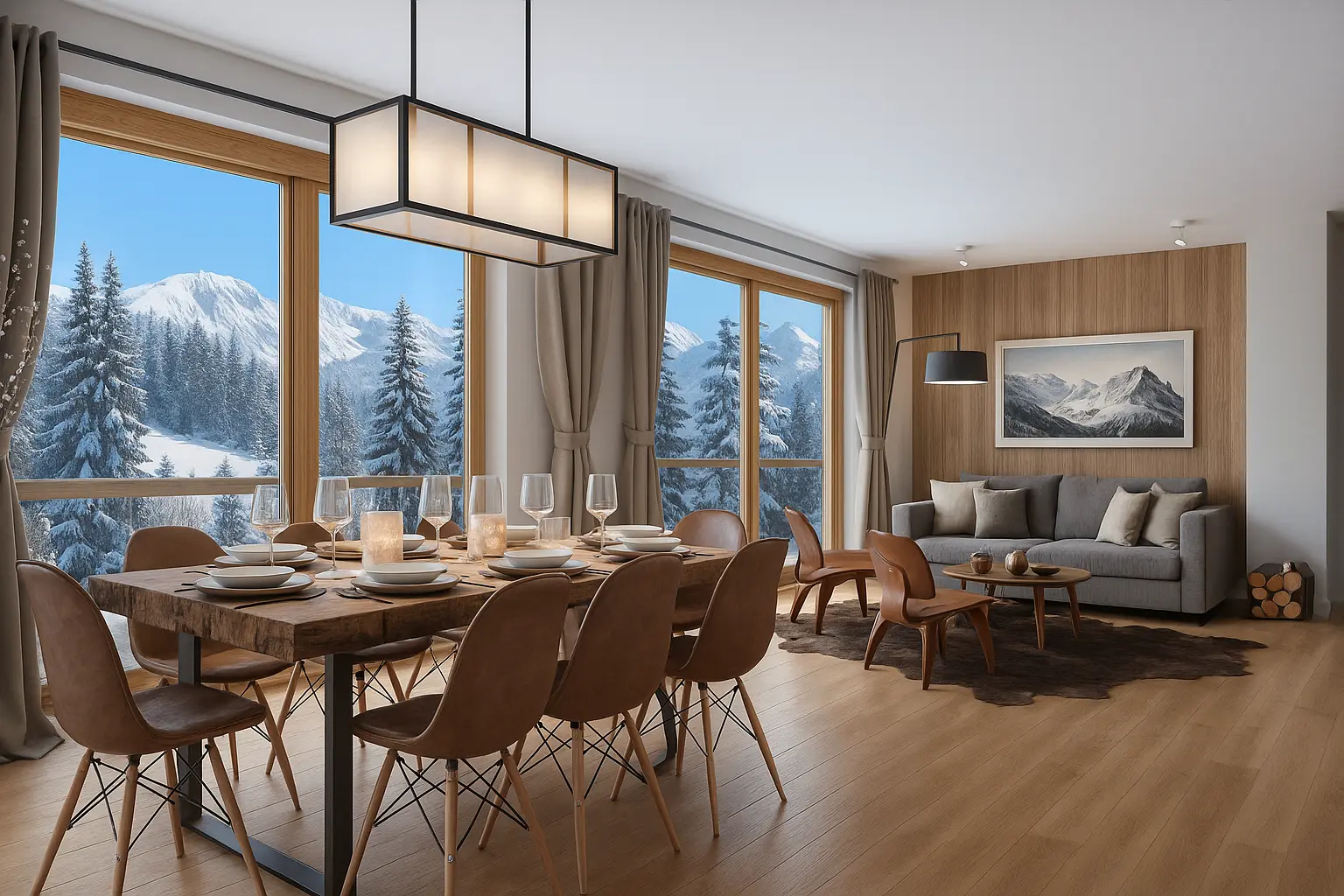The Ultra-High-Net-Worth Hesitation
Even among the ultra-high-net-worth individuals who traditionally dominated Courchevel 1850 and Val d’Isère, a curious phenomenon has emerged: hesitation. Properties that once sold without question to billionaires and hedge fund managers now face extended marketing periods as even the extraordinarily wealthy pause before committing €5-6 million for trophy properties they’ll occupy a mere 2.3 weeks annually.
New-build developments in these premier destinations now command €20,000-€30,000 per square metre—pricing that matches uber-premium Parisian neighborhoods like Saint-Germain-des-Prés or the 7th arrondissement. The psychological barrier isn’t affordability—these buyers could purchase multiple properties without financial strain—but rather the sheer inefficiency of having millions locked in assets with such minimal utilisation.
When a 200-square-metre chalet in Courchevel 1850 costs €6 million yet sees occupancy of just 16 days annually, even UHNWIs begin questioning the mathematics. This hesitation among the ultra-wealthy has created an unexpected opportunity: prime properties in slightly lower-altitude locations like Courchevel 1650 Moriond now offer the same ski-in/ski-out luxury, identical access to the 3 Vallées network, and comparable amenities at 40-50% lower acquisition costs—making fractional ownership in these locations particularly attractive to both aspirational buyers and pragmatic billionaires alike.
The Capital Reality Check
Of course, one must be realistic about the mathematics of fractional ownership. On a 1/8th share of a €3 million property, you won’t capture €750,000 in capital gains when the market appreciates 25%—but you will realize that same 25% appreciation on your €375,000 fractional investment. The proportional returns remain identical, while your capital exposure stays manageable.
More compelling still, consider the broader financial picture: running costs, property taxes, and France’s wealth tax (ISF) on assets exceeding €1.3 million. When factoring these ongoing expenses against modest usage patterns, many fractional owners reach a liberating conclusion: why sell at all? Instead of navigating exit strategies and capital gains calculations, perhaps the wisest course is simply transferring your share to the next generation—allowing your children to begin building their own family memories in the Alps while you’ve already optimized both the financial structure and the emotional legacy.
After all, some investments aren’t measured purely in euros and cents, but in powder days shared and traditions passed down. The fractional model makes both the financial and emotional mathematics rather more attractive than they’ve been in decades.
This conclusion ties together the practical financial benefits with the emotional/legacy aspect, ending on a warm note about family traditions while still acknowledging the financial realities.
Ready to own that dream property?
Get in touch with our team to secure your share today.



